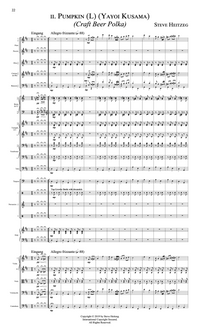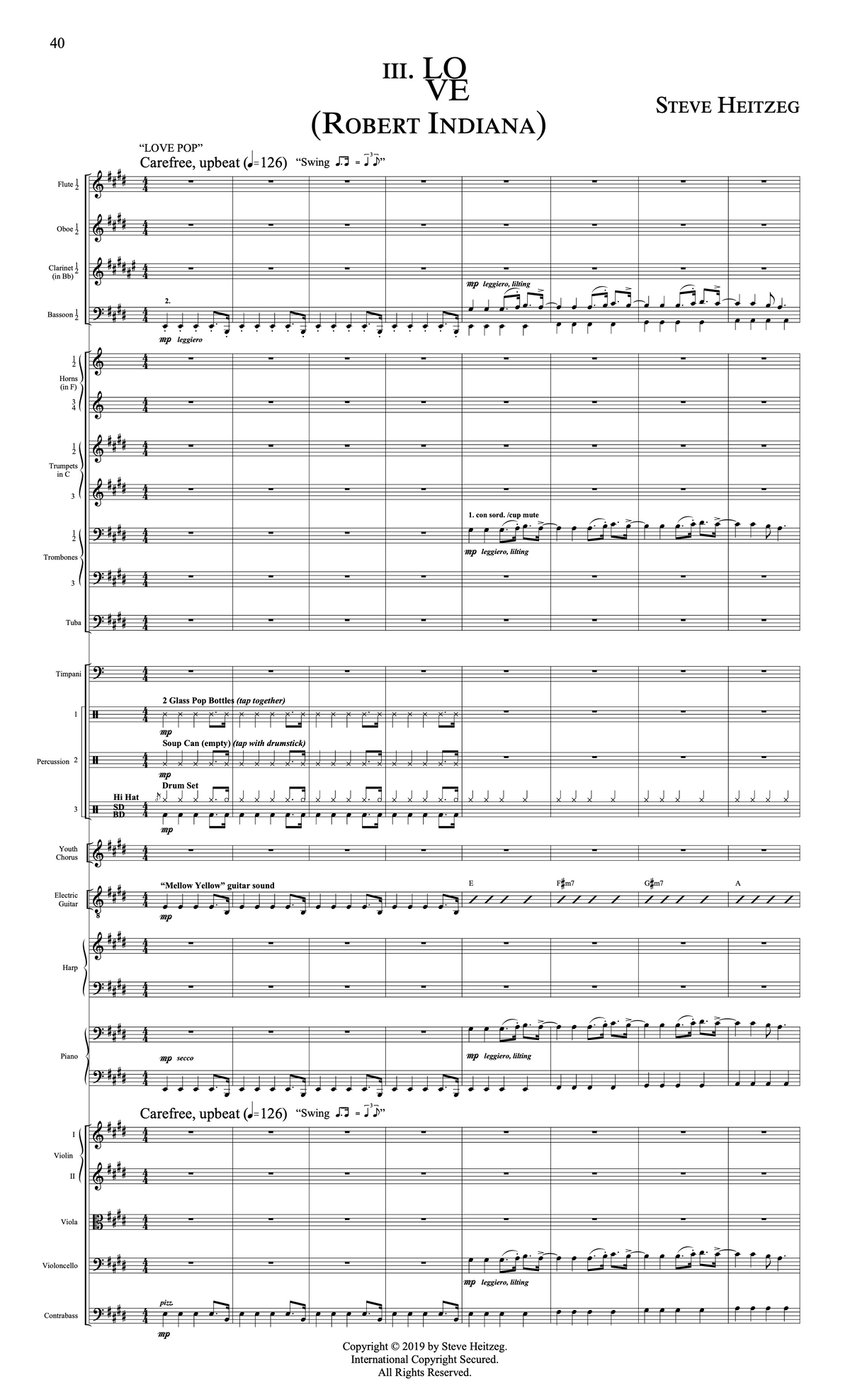Symphony in Sculpture III – Steve Heitzeg
- Regular
- $29.99
- Sale
- $29.99
- Regular
- Unit Price
- per
If you are interested in a parts set for a performance, please contact us.
Composer: Steve Heitzeg
Instrumentation: 2-2-2-2/4-3-3-1/timp, perc(3 players)/piano (dbl 1970s Magnus chord organ)/Harp/electric guitar/youth chorus/strings
Duration: Approx. 17 minutes
Date Written: 2019
Commissioned by: the Des Moines Symphony Orchestra & Joseph Giunta,Music Director & Conductor, in celebration of the 10th Anniversary of the John and Mary Pappajohn Sculpture Park and the continuing impact the Park has on the lives of all who visit it in Des Moines.
Premiered by: Des Moines Symphony Orchestra, Joseph Giunta, Music Director; Heartland Youth Chorus, Sandy Miller, Artistic Director; Des Moines Civic Center Auditorium, Des Moines, IA on 10/12/2019
Additional Information: Symphony is Sculpture is dedicated to John and Mary Pappajohn in gratitude for their gift to the Des Moines Art Center and the citizens of Des Moines, Iowa, of the sculptures in the John and Mary Pappajohn Sculpture Park; for their generosity and for their vision and deep understanding of the power of art to change a culture and community in a positive way
I. Iron Tree Trunk (Ai Weiwei)
Marked ‘In Protest, procession-like’, the symphony begins with the harp, piano and basses in their lowest registers, slowly moving, as if from the deepest roots of earth and sound, and gathering in scope until the full orchestra is involved. About Ai Weiwei, Jeff Fleming, the Director of The Des Moines Art Center, states: “Ai draws on current global politics, Chinese culture, human rights and more to push the definition of the arts into new realms. He is committed as an artist to effecting social change. This work [Iron Tree Trunk] refers to the tradition of contemplating rock and landscapes in Chinese culture. This tree exemplifies the tension between industrialization and cultural China.”
The opening theme is shaped and permutated like a series of different branches forming (the sculpture is a vertically standing tree trunk, with imaginary branches). Strings are marked ‘col legno battuto’ meaning with the wood side of the bow, and horns are marked ‘cuivre’ to emphasize the iron /metal of this sculpture. In the middle of the movement is a lyrical and tranquil reflection in the high strings. Percussionists play a wide range of natural percussion instruments: small stones, fallen ginkgo tree branches, bamboo wind chimes and a sunflower seed rattle (sunflower seeds are a sacred seed in Chinese culture). There is a reprise of the opening theme—this time heroic and rising, like a protest itself. The movement closes with “for the souls of birds and trees,” a mournful and distant solo cello line that floats over the tapping of stones and ginkgo tree branches.
II. Pumpkin (L) (Yayoi Kusama)
Kusama’s playful polka-dot pumpkin sculpture cried out for me to write a whimsical and slightly tongue-in-cheek polka. Inspired by Strauss’ Champagne Polka, I have composed a ‘craft beer polka’. Percussionists play the usual traditional percussion instruments in a polka such as glockenspiel, triangle and bass drum, but they also play a growler bottle, a crowler aluminum can and 2 beer bottles from a variety of craft beer breweries in Des Moines—for an authentic Des Moines sound. In the middle of the polka I have scored a vamp so that the conductor and the string principals can toast each other, the orchestra, and the audience with either a craft beer or a pumpkin spice latte before starting the polka up again.
III. LOVE (Robert Indiana)
Robert Indiana’s iconic LOVE sculpture required that I compose a pop-infused movement; his LOVE print was created in 1965, the LOVE sculpture in 1970. This movement reflects on the various meanings of the word love, opening with a carefree melody, and closing with the cyclical groove “Love More” (inspired by Megan Rapinoe’s eloquent speech on July 12, 2019: “This is my charge to everyone. We have to be better. We have to love more. Hate less.”) The youth choir sings this text with lush string chords and cascading piano riffs.
Extra instruments include glass pop bottles, a soup can, a 1970’s electric Magnus chord organ, electric guitar and drum set.






